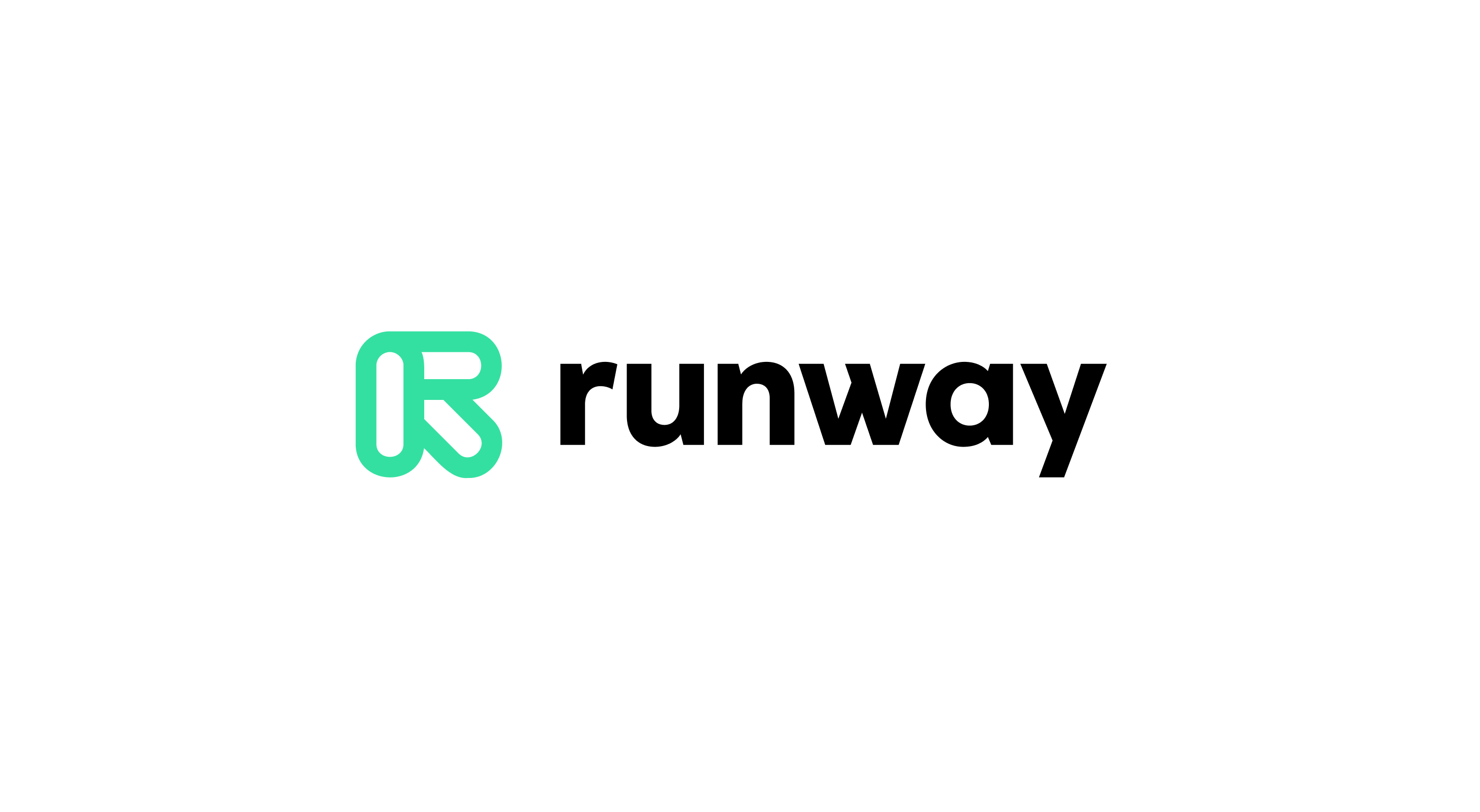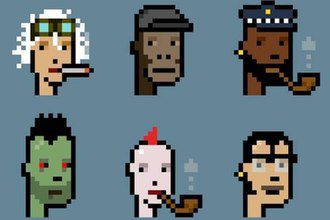December 12, 2023 by Diana Ambolis
516
In the rapidly expanding realm of Non-Fungible Tokens (NFTs), the fusion of generative artificial intelligence (AI) and blockchain technology is sparking a revolution in digital art and creativity. Generative AI tools, driven by machine learning algorithms, enable artists and creators to produce unique, algorithmically generated content, providing a fresh perspective on what is possible in
In the rapidly expanding realm of Non-Fungible Tokens (NFTs), the fusion of generative artificial intelligence (AI) and blockchain technology is sparking a revolution in digital art and creativity. Generative AI tools, driven by machine learning algorithms, enable artists and creators to produce unique, algorithmically generated content, providing a fresh perspective on what is possible in the NFT space. This article explores 10 essential generative AI tools that are reshaping the landscape of NFT creation, fostering innovation, and redefining the boundaries of digital art.
How can Generative AI Tools help in creativity in the NFT space?
Generative AI tools have emerged as powerful catalysts for creativity in the Non-Fungible Token (NFT) space, offering artists and creators innovative ways to produce unique and captivating digital assets. These tools leverage advanced machine learning algorithms to generate novel content, opening up new dimensions for artistic expression in the digital realm. Here’s a detailed exploration of how generative AI tools can significantly enhance creativity in the NFT space:
1. Unleashing Imagination with Algorithmic Creativity:
- Endless Possibilities: Generative AI tools, such as Artbreeder and Ganbreeder, allow artists to explore vast creative spaces by blending and manipulating visual elements algorithmically. This freedom sparks imagination, enabling creators to experiment with an extensive range of styles, colors, and forms that may not have been conceivable through traditional artistic methods.
2. Efficient Content Generation:
- Time and Resource Optimization: Generative AI tools streamline the content creation process by automating the generation of visuals. This efficiency allows artists to focus more on ideation and conceptualization, reducing the time and resources required for the manual creation of each NFT. The result is an accelerated workflow that facilitates the creation of larger and more diverse NFT collections.
3. Diverse Artistic Styles:
- Style Transfer and Fusion: Tools like Neural Style Transfer and Artbreeder empower artists to explore and incorporate various artistic styles into their creations. Style transfer techniques enable the fusion of different visual styles, producing unique and eclectic artworks. This diversity enhances the richness of the NFT space, catering to a wide range of tastes and preferences among collectors.
4. Narrative Enhancement with AI Storytelling:
- Interactive Storytelling: AI Dungeon and similar generative AI tools focused on storytelling contribute to the NFT space by enabling interactive and immersive narratives. Creators can integrate text-based storytelling with visual elements, providing collectors with a more engaging and holistic experience. This narrative dimension adds depth and meaning to NFT collections, transcending the purely visual realm.
5. Personalization and Customization:
- Tailoring Art to Preferences: Generative AI tools allow for a high degree of personalization and customization. Artists can tailor their creations based on individual preferences or specific themes, creating NFTs that resonate more deeply with collectors. This personalized touch enhances the emotional connection between creators and their audience.
6. StyleGAN for Realistic Visuals:
- Hyper-Realistic Art: StyleGAN, developed by NVIDIA, excels in generating hyper-realistic visuals. Artists can use this tool to create NFTs that closely mimic reality or experiment with surreal and fantastical elements. The ability to produce visually stunning and realistic digital assets expands the possibilities for artists to convey their creative visions.
7. Community Collaboration and Engagement:
- Interactive Platforms: Generative AI tools often operate on interactive platforms that encourage community collaboration. Platforms like Artbreeder foster a sense of community by allowing users to share and remix each other’s creations. This collaborative environment promotes engagement and inspiration, with artists building upon one another’s work to create a vibrant and interconnected ecosystem.
8. NFT Rarity and Scarcity:
- Algorithmic Rarity: Generative AI tools can be employed to introduce rarity and scarcity into NFT collections. By manipulating parameters and constraints within these tools, artists can create limited editions or unique variations, adding value to specific NFTs. This scarcity model aligns with the principles of blockchain-based ownership and can drive demand among collectors.
9. Iconic Projects and Cultural Impact:
- CryptoPunks as an Example: Iconic projects like CryptoPunks showcase the cultural impact that generative AI can have in the NFT space. The algorithmically generated characters have become synonymous with the early NFT movement, illustrating how algorithmically created digital assets can attain cultural significance and value.
10. Dynamic and Evolving Artwork:
- Generative Art Evolution: Generative AI tools enable the creation of dynamic and evolving artwork. Artists can design NFTs that change over time, responding to external stimuli, or even incorporating blockchain-based triggers. This dynamic quality adds an interactive and evolving dimension to digital art, making NFT collections more dynamic and engaging for collectors.
Generative AI tools have revolutionized creativity in the NFT space, empowering artists to explore uncharted territories and redefine the boundaries of digital art. From algorithmic image synthesis to interactive storytelling, these tools provide a versatile toolkit for creators to innovate and captivate audiences. As the NFT ecosystem continues to evolve, the fusion of generative AI and blockchain technology promises to be a driving force in shaping the future of digital art, offering collectors a diverse and dynamic array of NFTs that transcend traditional artistic paradigms. The collaboration between human creativity and artificial intelligence opens up endless possibilities, ushering in a new era of artistic expression in the digital age.
Also, read – Top 10 Ways Generative AI Is Increasing NFT Adoption
Why is it important to know about Generative AI tools for creators in the NFT space?
Understanding and leveraging generative AI tools is crucial for creators in the Non-Fungible Token (NFT) space for several compelling reasons. As the intersection of generative AI and blockchain technology continues to redefine digital art, creators who are well-versed in these tools gain a competitive edge and unlock new dimensions of creativity. Here’s a detailed exploration of why it is essential for creators in the NFT space to be knowledgeable about generative AI tools:
1. Innovation and Creativity:
- Exploring New Avenues: Generative AI tools open up innovative avenues for artistic expression. By understanding and utilizing these tools, creators can experiment with novel techniques and styles, pushing the boundaries of what is possible in digital art. This spirit of innovation is highly valued in the dynamic and evolving landscape of the NFT space.
2. Diversifying Artistic Styles:
- Expanding Visual Vocabulary: Generative AI tools, such as Artbreeder and StyleGAN, allow creators to diversify their artistic styles. By blending and manipulating visual elements algorithmically, artists can produce a wide range of unique and visually striking compositions. This diversity is essential for attracting a broader audience and catering to varying tastes within the NFT community.
3. Efficiency in Content Creation:
- Accelerating Workflow: Generative AI tools streamline the content creation process, enabling creators to generate visuals more efficiently. This efficiency is particularly valuable for artists producing large NFT collections. By automating certain aspects of content creation, artists can focus on ideation and concept development, leading to a more streamlined and productive workflow.
4. Personalization and Customization:
- Tailoring to Collectors’ Preferences: Generative AI tools empower creators to personalize and customize their artworks based on individual preferences or specific themes. This tailoring enhances the appeal of NFTs to collectors, creating a more personalized and engaging experience. Knowing how to use these tools allows creators to craft digital assets that resonate more deeply with their target audience.
5. Rarity and Scarcity Models:
- Creating Limited Editions: Generative AI tools can be instrumental in introducing rarity and scarcity into NFT collections. Creators can manipulate parameters to create limited editions or unique variations, aligning with the scarcity model often favored by collectors. This understanding of generative AI tools enhances the creator’s ability to strategically position and market their NFTs.
6. Dynamic and Interactive Artworks:
- Engaging Collectors: Generative AI tools enable the creation of dynamic and interactive artworks. Creators can design NFTs that change over time or respond to external stimuli, adding an interactive dimension to digital art. This engagement factor can be a key differentiator in the competitive NFT market, capturing the attention of collectors seeking unique and dynamic assets.
7. Community Collaboration:
- Participating in Collaborative Platforms: Many generative AI tools operate on interactive platforms that encourage community collaboration. Creators can share their work, remix others’ creations, and participate in a collaborative environment. Being part of such platforms fosters a sense of community and provides opportunities for exposure, feedback, and collaborative projects within the NFT community.
8. Staying Ahead of Trends:
- Adapting to Industry Shifts: The NFT space is dynamic, with trends and preferences evolving rapidly. Creators who understand and embrace generative AI tools are better positioned to adapt to industry shifts. Staying ahead of technological advancements ensures that creators remain relevant and can harness emerging trends in the NFT space.
9. Cultural Impact and Recognition:
- Contributing to Iconic Projects: Iconic projects like CryptoPunks demonstrate the cultural impact that generative AI can have in the NFT space. Creators who are knowledgeable about these tools can contribute to and participate in groundbreaking projects, potentially achieving recognition and prominence within the NFT community.
10. Facilitating Narrative Development:
- Integrating AI-Driven Storytelling: For creators interested in narrative-driven NFTs, understanding AI-driven storytelling tools like AI Dungeon can be transformative. This knowledge enables creators to integrate compelling narratives seamlessly with their visual artworks, creating a more immersive and captivating experience for collectors.
In the rapidly evolving landscape of the NFT space, creators equipped with knowledge about generative AI tools gain a significant advantage. These tools not only facilitate innovation, efficiency, and personalization in content creation but also enable creators to actively contribute to the cultural and artistic movements within the NFT community. As the demand for unique and engaging digital assets continues to grow, being proficient in generative AI tools positions creators as pioneers in the ongoing evolution of digital art and NFTs. Embracing these tools empowers creators to stand out, captivate audiences, and contribute to the ever-expanding canvas of creativity in the NFT space.
10 essential generative AI tools that are reshaping NFT space
1. Artbreeder:

Artbreeder stands at the forefront of generative AI tools, empowering artists to create and manipulate images by blending different visual elements. Developed by Joel Simon and his team at AI-driven design studio Runway ML, Artbreeder allows users to navigate the vast space of possibilities, generating unique and visually stunning compositions. Its intuitive interface and powerful algorithms make it a go-to tool for NFT creators seeking to experiment with diverse artistic styles.
2. DeepDream:

DeepDream, a creation of Google’s AI researchers, takes images to a surreal level by interpreting and enhancing patterns within them. Originally developed to visualize neural networks, DeepDream has found its way into the hands of digital artists exploring the intersection of AI and art. By applying the algorithm to images, artists can transform mundane scenes into dreamlike, intricate compositions, providing a unique aesthetic for NFT enthusiasts.
3. Runway ML:

Runway ML serves as a versatile platform that hosts a myriad of generative AI models, offering a playground for artists, designers, and developers. From style transfer models to text-to-image generators, Runway ML provides a diverse toolkit for NFT creators to experiment with and bring their imaginative visions to life. The platform’s user-friendly interface and extensive library of models make it an indispensable resource in the generative art landscape.
4. DALL-E:

Developed by OpenAI, DALL-E gained significant attention for its ability to generate diverse and imaginative images from textual prompts. Leveraging a GPT (Generative Pre-trained Transformer) architecture, DALL-E can create visuals based on written descriptions, opening up new possibilities for storytelling through NFTs. Artists can use DALL-E to translate abstract concepts into visually captivating and entirely unique digital artworks.
5. Artbreeder X Runway ML:
The collaboration between Artbreeder and Runway ML, known as Artbreeder X Runway ML, combines the strengths of both platforms. Artists can harness the image manipulation capabilities of Artbreeder and seamlessly integrate them into Runway ML’s extensive library of models. This collaboration provides creators with an enriched toolkit for producing complex and captivating generative art for the NFT space.
6. Neural Style Transfer:
Neural Style Transfer is a technique that merges the content of one image with the stylistic features of another. This generative AI tool allows artists to apply the visual style of renowned artworks, famous artists, or even personal creations to their own images. The result is a fusion of artistic styles, creating visually striking and unique compositions ideal for the diverse and eclectic NFT market.
7. AI Dungeon:
AI Dungeon, developed by OpenAI, takes generative AI beyond visual art into the realm of storytelling. Using natural language processing, AI Dungeon enables users to collaboratively create interactive narratives. NFT creators can leverage this tool to produce unique storytelling experiences, combining text-based narratives with visual elements to offer a holistic and immersive experience for collectors.
8. Ganbreeder:
Ganbreeder, a precursor to Artbreeder, is a generative AI tool that allows users to explore the possibilities of image synthesis through GANs (Generative Adversarial Networks). It enables artists to create and evolve images collaboratively by blending and mutating visual elements. The platform’s interactive nature makes it an engaging and powerful resource for generating NFT-worthy visual content.
9. StyleGAN:
StyleGAN, developed by NVIDIA, represents a milestone in the evolution of generative adversarial networks. This model allows for the creation of high-quality, realistic images by separating the content and style of the visuals. Artists can use StyleGAN to craft hyper-realistic and visually stunning artworks, pushing the boundaries of what is achievable in the NFT space.
10. CryptoPunks:

CryptoPunks, while not a tool in the traditional sense, deserves a mention as a groundbreaking project that leverages generative AI in the NFT space. Created by software developers Matt Hall and John Watkinson, CryptoPunks consists of 10,000 unique 24×24 pixel art characters generated algorithmically. These characters have become iconic in the NFT community, showcasing the potential for algorithmically created digital assets to attain cultural significance and value.
Conclusion:
Generative AI tools are ushering in a new era of creativity in the NFT space, providing artists and creators with the means to produce unique, algorithmically driven artworks. From image synthesis and storytelling to style transfer and hyper-realistic visuals, these tools are pushing the boundaries of what’s possible in the digital art landscape. As the NFT market continues to evolve, the fusion of generative AI and blockchain technology promises to redefine the art world, offering collectors and enthusiasts a diverse array of captivating and unprecedented digital assets. The journey of exploration and innovation in generative AI tools is just beginning, opening up endless possibilities for the future of NFT creation.

































































